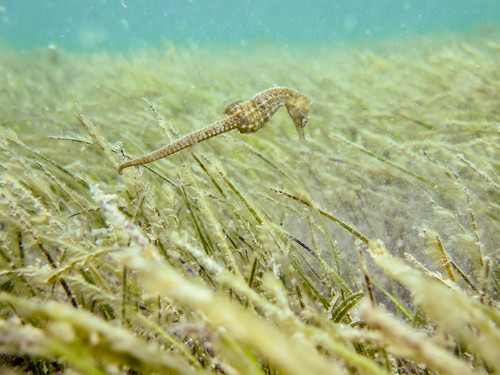Five pygmy seahorses spotted in Indonesia
Featured observation: Barbigant's pygmy seahorse by maractwin

Our latest featured observation comes to us from Indonesia’s Flores Sea. iSeahorse user maractwin spotted a group of five Bargibant’s pygmy seahorses, Hippocampus bargibanti. This is no small feat, considering just how well-camouflaged these creatures are against their gorgonian coral homes. Then again you would expect a keen eye from such an avid naturalist – in addition to his 19 observations of six different seahorse species, Mark has logged over 9000 observations of almost 3000 species on iNaturalist!
Spotted by Mark off of Banta Island near Komodo National Park (an epicenter of marine fish and seahorse diversity), these pygmy seahorses are some of the smallest in the world, reaching a maximum length of only about three centimetres! Males brood their young on their trunk rather than just below it like most seahorse species.
This species is listed as Data Deficient on the IUCN Red List of Threatened Species because very few studies have focused on them to date. iSeahorse observations like this one will help us properly assess the species in the near future as we find out more about it.
Great work Mark – keep those observations coming!!

 The next
The next 



